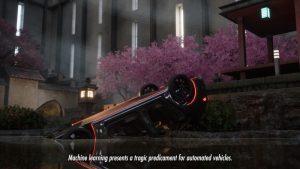 Credit photo: Johannes Schwartz
Credit photo: Johannes Schwartz
In 1999, Andrew Lawrence invented the Skyscraper Index. According to him, there is a correlation between the construction of the world’s tallest buildings and the impending end of business cycles. A good example is the Great Depression which followed a skyscraper boom. The Empire State Building was finished in 1929 but didn’t achieve full occupancy for 40 years. Lawrence believes that the construction of a new record-breaking skyscraper goes hand in hand with speculation, over-investment and monetary expansion are raging. Some analysts found the interconnection unreliable but the Skyscraper Index gained some credibility back a few weeks ago when the press relayed the news that Dubai‘s economy is struggling to rescue itself from its debts. As a result, the construction of its most hysterical projects such as a skyscraper higher than the Burj Dubai (at 2,313 feet tall, it is poised to be 40% higher than the current record holder, Taipei 101) and an even bigger version of the Palm Island is faltering.
 The desert and road construction works around Dubai. Photograph: Olivier Matthys/EPA
The desert and road construction works around Dubai. Photograph: Olivier Matthys/EPA
Whether they take the Skyscraper Index seriously or not, people agree that architecture is conditioned by the economical climate. Architectural projects were the first casualties of the current financial crash. Rien ne va Plus, an exhibition taking place at Bureau Europa (which used to be the Southern branch of the National Institute of Architecture) in Maastricht, delves into the economic crisis and its intricate relation with architecture. Started as a research by architectural firm Powerhouse Company, this rich, thought-provoking project also takes the form of a reader published in collaboration with the magazine A10 and a series of debates.
 Outside of Bureau Europa
Outside of Bureau Europa
This crisis is particularly relevant to architecture for two reasons. First, because this last boom was caused by the financial structures of real estate loans and speculation; Architecture was a means of wealth rather than well-being, with the result that houses were being built to be resold rather than inhabited. Architecture became a speculation feeder and obtained a doubtful role as marketeer. Second, because of the evolution of the ethics of architecture as well as its position towards and engagement with the society that produces it. Now the pressing question is how can we create architecture that is based on long-term qualities rather than on short-term profits?
 Credit photo: Johannes Schwartz
Credit photo: Johannes Schwartz
The reader that accompanies the exhibition reproduces some of the sharpest essays and articles written about the economical crisis, the effects of globalization, the eroded moral integrity, the flaws of our free market economy and their impact on architects and architecture. I’ve listed a few of them along with some images of the superb 3D-diagrams designed by Powerhouse Company for the exhibition:
 On Hold: The impact of the economic crisis per country, with the height of the building projects put on hold after the Sept 2008 crash (from red for countries in official recession to blue for countries with economic acceleration)
On Hold: The impact of the economic crisis per country, with the height of the building projects put on hold after the Sept 2008 crash (from red for countries in official recession to blue for countries with economic acceleration)
“Globalisation allowed the US to suck up the savings of the rest of the world and consume more than it produced.” George Soros, FT.com January 23 2008.
 Seismograph. The line indicates the daily volatility of the Dow Jones index, between 1901 and 2009
Seismograph. The line indicates the daily volatility of the Dow Jones index, between 1901 and 2009
“If Monaco is, in Jack Nicholson’s phrase, Alcatraz for the rich, what shall we make of Dubai?” Germaine Greer, The Guardian, Plan, 9 February 2009.
“Today, outlandish architecture and design-art are placed alongside Damien Hirst’s Diamond Skull and the Candy and Candy’s apartments as symptoms of empty extravagance.” Kevin McCullagh, Plan, March 2009.
 I don’t know who made this Hirst Gherkin, it’s one of the posters i saw in the show
I don’t know who made this Hirst Gherkin, it’s one of the posters i saw in the show
“Public housing, a staple of 20th-century Modernism, was nowhere on the agenda. Nor were schools, hospitals or public infrastructure. Serious architecture was beginning to look like a service for the rich, like private jets and spa treatments.” Nicolai Ouroussoff, The New York Times, December 2008.
“And now it has come: people’s houses really are earning more than they do, and as a result every householder has been turned into an untaxed selfemployed developer.” Martin Pawley, The Architects’ Journal, February 2005.
 One of the features of the housing bubble is that. over the course of years, houses started to earn relatively more than the labour of people who inhabit them. The models show the average growth of house prices measured against the average growth of income, inflation corrected, within The Netherlands
One of the features of the housing bubble is that. over the course of years, houses started to earn relatively more than the labour of people who inhabit them. The models show the average growth of house prices measured against the average growth of income, inflation corrected, within The Netherlands
The 21st century starts indeed as one of owner speculation rather than occupation.
“Abstract projects solidified into Architectural form, and, sponsored by oil and stock market wealth, were “grounded” in the most socially unjust locations and in the most environmentally wasteful ways. Real-estate, disguised as Architecture, falsely credited with sustainability, turned out to become the profitable terrain-for-surplus capital, absorbing into its ever more elaborate shapes money that could have been invested otherwise.” Zvi Hecker, January 2009.
 Colours indicate the freedom status of each country (the darker the least freedom). Pins represent the projects realized by six different Priztker-prize winning architects around the world
Colours indicate the freedom status of each country (the darker the least freedom). Pins represent the projects realized by six different Priztker-prize winning architects around the world
Think ‘starchitects’ projects for the Beijing Olympics and in Gulf States. The Louvre opening a branch in Abu-Dhabi.
 Credit photo: Johannes Schwartz
Credit photo: Johannes Schwartz
This exhibition doesn’t try to predict the outcome of the bets that were taken in our global casino economy. It doesn’t have the ambition to formulate answers nor to provide solutions. It is rather an opening to a conversation with architects and the general public. In the coming year we will be creating a series of events throughout Europe concerning this book, to initiate a dialogue about the possible solutions to these crises.
Rien ne va Plus opens until the 10th of January 2009 at NAiM/Bureau Europa, in Maastricht, The Netherlands.
All my images.
Previously at NAIM/Bureau Europa: Changing Ideals: Re-thinking the House at NAI in Maastricht, State Alpha, on the architecture of sleep at the NAI in Maastricht, Edible City – Part 1 and Part 2.







